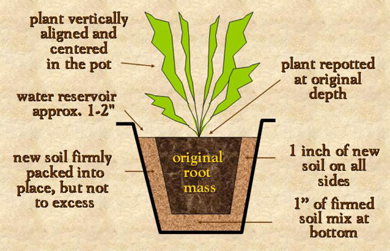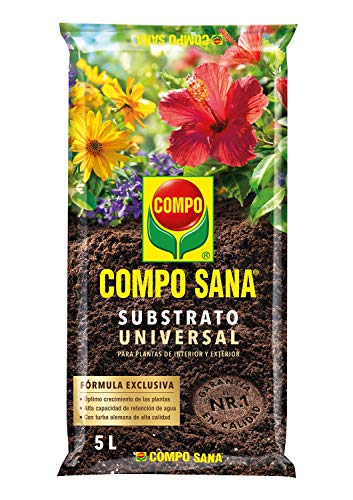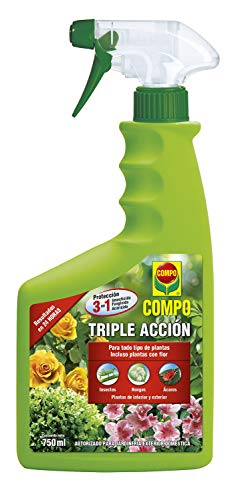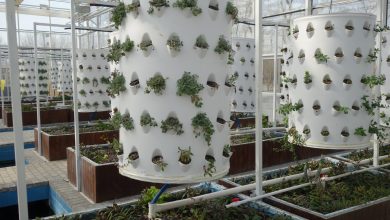Indoor Plant Care: [Soil, Humidity, Pruning and Problems]

What characteristics do indoor plants have?

Indoor plants provide a wonderful atmosphere in the house.
Not only because they are beautiful and adorn the spaces, but because they add a series of conditions that improve the internal atmosphere.
Among the improvements that can be described in relation to indoor plants we have air purification by adding oxygen to the environment, humidifying the interior of the house and reducing noise.
Likewise, they considerably improve aesthetics and, as the green color of its leaves and flowers are synonymous with relaxation, they immerse us in an atmosphere of tranquility.
Indoor plants can be placed in intimate spaces, in the living room, corners, balcony, terrace, depending on the taste of each one, and we can even combine them with furniture and other decorative elements. And it is that indoor plants add aesthetics to environments.
One of the things that we must take into account is the pot, the pot or the bowl where we will grow them, since we can have them as hanging plants, at ground level, on the coffee table, in the windows, or, as in the case of palm trees and cacti, in tropical environments that will impregnate spaces with joy.
Nothing like natural plants, so let’s get rid of those artificial plants that are the opposite because, like them, they generate an artificial atmosphere that contrasts with the beauty of nature.
It is not difficult to have them, we just have to put a little effort and in the end we will feel rejoiced for having fulfilled an objective that will make us feel proud as human beings and that will please our wife and our children because, surely, the home environment will improve.

There are numerous species of plants that are suitable for interiors, including long-lasting plants that, as their name indicates, will remain by our side for a long time if we provide them with proper care, as we will show you in the following lines.
Some of the most sought-after long-lasting indoor plants are cactus, Adam’s rib, anthurium, African violet, peace lily, Christ’s thorn, parlor palm, ferns, ficus, ivy, dracaena, the trunk of Brazil, the necklace of hearts and the prayer plant, among many others.
Each of them has a mission to fulfill in the house. There are those that filter pollution gases and formaldehyde, a dangerous chemical compound present in any house.
Those that lend themselves to elaborate very elegant green tapestries, to create a marine and tropical environment; or like the peace lily, which according to NASA is an air purification plant like no other.
What soil needs do indoor plants have?
Durable houseplants will grow according to your condition. The elephant plant is larger than others, as it can reach up to 1 m 30 cm in height inside the house, although outside it exceeds 10 m, but others, such as the prayer plant, which closes its leaves at night they are much smaller.
When planting them in a pot, it is best to provide them with a peaty substrate or a surface layer of soil. Transplanting and grafting are important in the growth of the plant, as we must prevent them from becoming too tight because they can run out of air.

The ideal time to refine the soil is transplantation, taking into account that there are plants that require soil with special characteristics, and when they have spent a long time in the same soil, it is essential to fertilize because the substrate becomes poor and the plants, without reserves, they need nutrients.

How to make indoor plants grow strong and vigorous?
In general terms, if we want them to develop strong, indoor plants of any kind need the same care, both in terms of temperature, watering and light.
They are plants that require light, such as the necklace of hearts, the anthurium or the ferns, but the light should not be given directly, otherwise their leaves and flowers will be affected. For this reason, we will put them in the windows, the balcony or in any space of the house, even in the garden, protected from the sun’s rays.
However, there are others, such as the rosary plant, a beautiful hanging specimen, which require at least two hours of direct sunlight a day to develop healthily. They also cannot be drowned in water during irrigation, because their roots will rot and consequently they will be in serious danger of death.

Irrigation is not uniform in all plants. For example, the cactus should have a moderate watering, reduced to the maximum in winter, every 10 or 12 days in spring, but in summer every 4-8 days, depending on the climate where we are.
For their part, succulents, beautiful plants of the succulent family, ensure a reserve of water in their leaves, and the more irrigation they receive, the more fleshy their leaves become. When watering them, it is better to check the substrate by inserting your finger to see if it is dry. Also, if it lacks water, its leaves will be swollen and purple in color.
What humidity do indoor plants require?
One of the things that we must take into account is the adequate temperature for the maintenance of the plants. It is good to know that thermal conditioning causes changes in temperature, producing imbalances in them.
This will make us see the need for water, because if the environment dries out more than normal, it will need more humidity, so we will proceed to hydrate it by moistening the leaves with a sprinkler, like a fine and delicate rain that will provide well-being.

Therefore, we must be aware of nearby devices, such as heating, which tend to dry out the spaces around the plant. As with soil, the temperature of houseplants is not uniform.
It depends on the type of plant, so in most cases we will guarantee humidity by placing the pot on a plate with pebbles and water, so that it benefits from evaporation.

Tropical plants, such as ferns, tillandsia (pink feather) or anthurium, require a temperature of 15ºC-25ºC, but it is best to check the humidity of the substrate before watering them, and once watered, remove the excess water.
We can also submerge them completely in a container of rainwater, and then take them out, shake them and dry them, to guarantee them humidity.
Is it necessary to prune indoor plants?
We will do the pruning to keep them in optimal condition: Using sharp scissors or pruning shears, we will eliminate the leaves, branches and dry or withered flowers, and then we will cut the very long branches and stems until we give them the appropriate shape.
When should we prune indoor plants?
It is good to prune at the beginning of the growing season. If they do not bloom, prune at the end of winter, and if they have flowers, prune after flowering. Do not prune if buds have not opened.
How can we avoid pests and diseases of indoor plants?
Indoor plants, like the rest of nature, tend to be attacked by pests and diseases, so we must be vigilant in order to prevent any anomalous situation in these cases.

It is important to have the appropriate knowledge to treat them, so it is advisable to consult the experts or in any case have the appropriate ecological homemade repellents or pesticides on hand.
Maybe you are also interested in:
- How often and how to water my indoor plants?
- [10 Types] of Indoor Plants that Need Low Light
- [14 Types of Indoor Plants] to Have at Home
- Homemade Indoor Plant Fertilizer: Our Formula – Sembrar100
- Begonia Rex: [Cultivation, Substrate, Irrigation, Associations, Pests and Diseases]
- How to Fertilize Indoor Plants Step by Step – Sembrar100
- How to Transplant an Indoor Plant: [Complete Guide]
- Caring for Indoor Plants: [Pruning, Light, Substrate and Humidity]
- Irrigation in Indoor Plants: [Basic and Complete Guide]
- The [15 Best] Durable and Hardy Houseplants
- List of [16] Indoor Plants that Bloom All Year
- List of [15 Indoor Plants Without Flower]: Examples and Care
- Indoor Planting to Decorate your House: Where to Buy? List
- Indoor Hanging Plants: [15 Examples + Care, Watering and Substrate]
- Plant and Grow Indoor Plants Like a Pro

![Photo of Irrigation of the Kiri: [Needs, Frequency and Procedure]](https://www.complete-gardening.com/wp-content/uploads/2021/06/Paulownia_tomentosa_1623285675-390x220.jpg)

![Photo of Dipladenia: [Cultivation, Irrigation, Care, Pests and Diseases]](https://www.complete-gardening.com/wp-content/uploads/2022/08/dipladenia-cultivation-irrigation-care-pests-and-diseases-390x220.jpg)